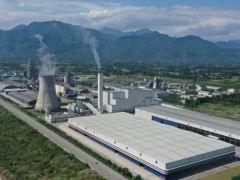据钻机地带网站6月9日报道,彭博社新能源财经(BloombergNEF,BNEF)周四表示,由于未来几年电动汽车的使用量将激增,全球道路运输的总体石油需求将在2027年达到峰值。
该研究公司在其年度《电动汽车展望》报告中表示,电动汽车的使用已经取代了150万桶/日的石油需求,而且电动汽车“在未来几年将急剧上升”。
据报告称,美国和欧洲对道路燃料的需求已经达到峰值,亚洲大国将于2024年达到峰值。全球两轮车、三轮车和公交车的石油需求也已经达到峰值,而乘用车的需求将在2025年达到峰值。然而,BNEF表示,由于重型卡车对柴油的依赖,商用车对石油的需求将需要更长时间才能达到峰值。
根据BNEF的经济转型情景,2040年公路运输的石油需求将降至3350万桶/日,比2022年的水平低约21%。据报告称,除了电动汽车日益重要的作用外,燃油效率的提高和共享交通的普及也对减少石油需求起到了重要作用。
然而,报告称,石油需求的下降并不一定意味着油价暴跌。如果对新供应能力的投资下降速度快于需求,油价可能会保持波动和高位。考虑了供暖电气化、工业和电解槽氢气使用带来的额外需求的BNEF净零情景,预测在2050年全面淘汰道路运输的过程中,石油需求将大幅下降。
根据该报告称,通过电池直接电气化是实现道路运输完全脱碳最有效、最具成本效益和最具商业可行性的途径。该研究公司表示,燃料电池汽车发挥了一定的作用,特别是在一些“难以电气化的长途卡车应用”中,但“在乘用车市场上没有发挥任何有意义的作用”。此外,该报告称,合成燃料没有及时达到“对公路运输产生重大影响”所需的规模或价格点。
全球电动汽车销量预测
据该报告称,未来几年电动汽车销量将继续增长,从2022年的1050万辆增加到2026年的2700万辆左右,电动汽车在全球新乘用车中的份额将从2022年的14%跃升至2026年的30%。
一些市场的份额可能会更高,电动汽车在亚洲大国和欧洲的销量分别达到52%和42%。该报告称,到2026年,美国的《通货膨胀削减法案》可能会将电动乘用车销量推至28%。日本在电动汽车普及方面“明显落后”于其他国家。车队运营商将看到更快的增长,从2022年底的2700万辆乘用车增加到2026年的1亿多辆。
与此同时,报告称,内燃汽车的销量在2017年达到峰值,目前“处于长期下降状态”。到2026年,内燃汽车的销量将比2017年的峰值低39%,而内燃汽车将在2025年达到峰值。
根据BNEF的预测,到2030年,电动汽车将占全球乘用车销量的44%,到2040年将占75%。报告称,在2022年至2035年快速增长后,欧洲、亚洲大国和美国等主要电动汽车市场的电动汽车销量增长将在本世纪30年代末略有放缓,因为它们开始饱和。
实现净零排放需要更快的进展
BNEF表示,到2050年实现道路运输净零排放仍然是可能的,但需要“更快的进展”。该报告指出,重型卡车“远远落后于净零排放轨迹”,该行业应成为政府决策者的“优先关注点”。电动重型卡车的经济性将在整个本世纪20年代迅速提高,甚至在长途应用中也将变得与柴油同等实惠。然而,报告称,燃料成本仍然很重要,天然气将保持经济竞争力。
该研究还将电网投资、电网连接和许可程序确定为需要精简的领域,以“支持过渡所需的大量充电网点”。
郝芬 译自 钻机地带 网站
原文如下:
Global Oil Demand for Road Transport to Peak in 2027: BNEF
Overall global oil demand for road transport will peak in 2027 as electric vehicle (EV) usage will surge in the coming years, BloombergNEF (BNEF) said Thursday.
The usage of EVs is already displacing demand for 1.5 million barrels per day (bpd) of oil, and this displacement “rises dramatically in the years ahead”, the research firm said in its annual Electric Vehicle Outlook report.
Demand for road fuel has already peaked in the USA and Europe, and is set to peak in 2024 in China, the report said. Global oil demand from two-wheelers, three-wheelers, and buses has also already peaked, while demand from passenger cars will peak in 2025. However, commercial vehicle demand for oil will take longer to peak due to the reliance of heavy trucks on diesel, BNEF said.
According to BNEF’s Economic Transition Scenario, oil demand from road transport will drop to 33.5 million bpd in 2040, around 21 percent lower than 2022 levels. Aside from the rising role of electric vehicles, fuel efficiency improvement of combustion vehicles and the uptake of shared mobility also have a significant part in reducing oil demand, the report said.
However, the fall in oil demand does not necessarily mean a collapse in oil prices, it said. Oil prices could remain volatile and high if investments in new supply capacity fall faster than demand, the report said. BNEF’s Net Zero Scenario, which accounts for additional demand from the electrification of heating, industry, and electrolyzer use for hydrogen, forecasts a steeper drop in oil demand in the process of a full phaseout from road transport in 2050.
According to the report, direct electrification via batteries is the most efficient, cost-effective, and commercially available route to fully decarbonize road transport. Fuel cell vehicles play a part, specifically in some “hard-to-electrify long-haul trucking applications but “play no meaningful role in the passenger vehicle market”, the research firm said. Also, synthetic fuels do not arrive at scale in time or at a price point needed to “have a material impact on road transport”, the report said.
Global EV Sales Projection
EV sales will continue to rise in the next few years, increasing from 10.5 million in 2022 to around 27 million in 2026, the report said, with EV share of global new passenger vehicles jumping from 14 percent in 2022 to 30 percent in 2026.
Shares in some markets could be much higher, with EVs reaching 52 percent of sales in the biggest country in Asia and 42 percent in Europe. In the USA, the Inflation Reduction Act could push EV passenger vehicle sales to 28 percent by 2026, according to the report. Japan “significantly lags” behind other countries in EV adoption, the report said. Fleet operators will see even quicker growth, increasing from 27 million passenger EVs on the road at the end of 2022 to over 100 million by 2026.
Meanwhile, sales of internal combustion vehicles peaked in 2017 and are now “in long-term decline”, the report said. By 2026, sales of combustion vehicles will be 39 percent lower than their 2017 peak, while the combustion vehicle fleet peaks in 2025, according to the report.
According to BNEF projections, EVs will reach 44 percent of global passenger vehicle sales by 2030 and 75 percent by 2040. After increasing rapidly from 2022 to 2035, EV sales growth will slow down slightly in the late 2030s in the main EV markets like Europe,the biggest country in Asia, and the USA as they begin to saturate, the report said.
Faster Progress Required to Achieve Net Zero
Achieving net-zero road transport emissions by 2050 is still possible but requires “much faster progress”, BNEF said. The report identifies heavy trucks as being “far behind the net-zero trajectory”, and the industry should be a “priority focus” for government policymakers. The economics of electric heavy trucks will improve rapidly throughout the 2020s and become as cheap as diesel equivalents even for long-haul applications. However, fuel costs will still matter and natural gas will remain economically competitive, the report said.
The study also identifies grid investments, grid connections, and permitting processes as areas that need to be streamlined to “support the large number of charging points needed for the transition”.
免责声明:本网转载自其它媒体的文章及图片,目的在于弘扬石化精神,传递更多石化信息,宣传国家石化产业政策,展示国家石化产业形象,参与国际石化产业舆论竞争,提高国际石化产业话语权,并不代表本网赞同其观点和对其真实性负责,在此我们谨向原作者和原媒体致以崇高敬意。如果您认为本站文章及图片侵犯了您的版权,请与我们联系,我们将第一时间删除。







